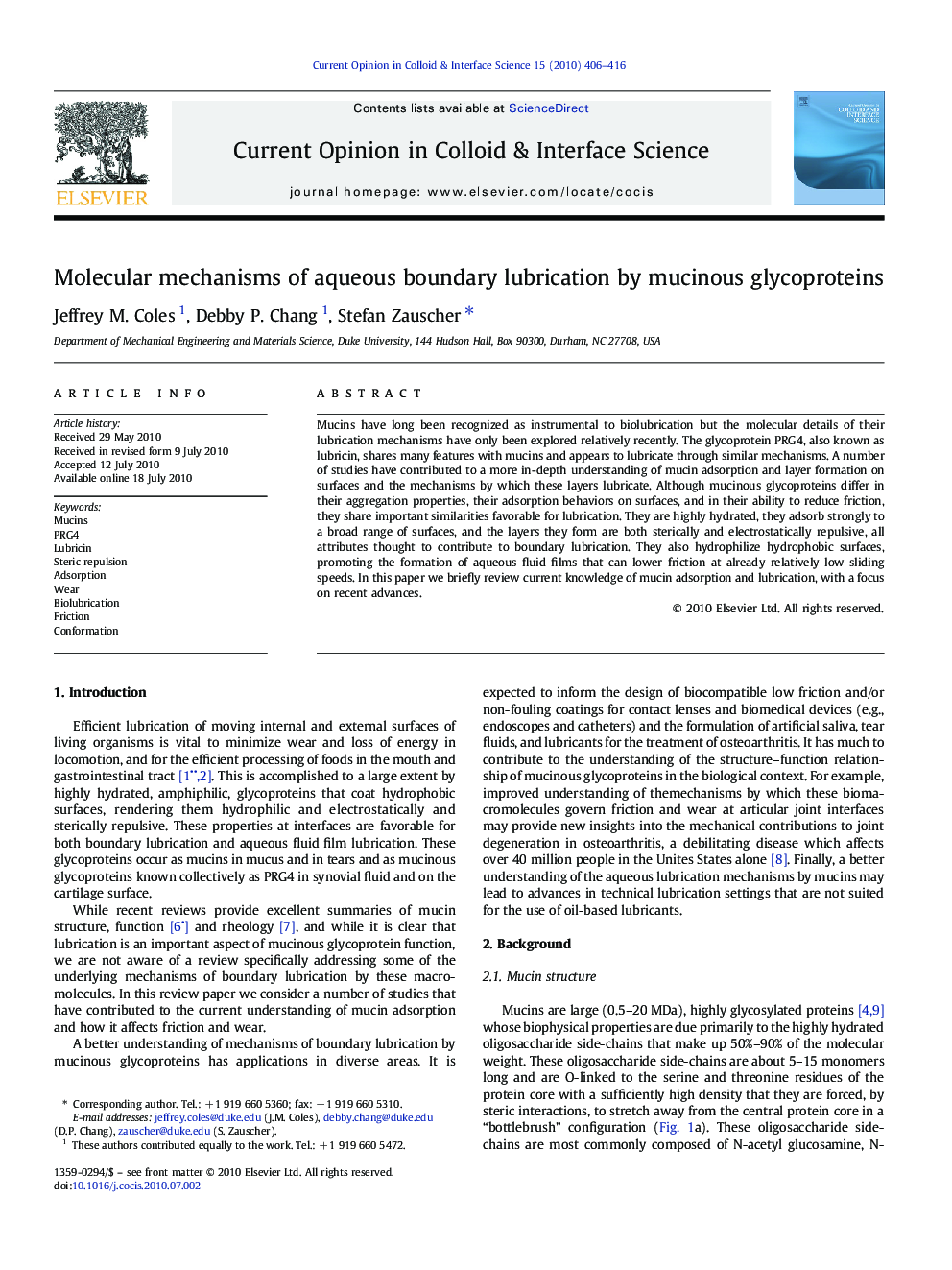| کد مقاله | کد نشریه | سال انتشار | مقاله انگلیسی | نسخه تمام متن |
|---|---|---|---|---|
| 603418 | 880218 | 2010 | 11 صفحه PDF | دانلود رایگان |

Mucins have long been recognized as instrumental to biolubrication but the molecular details of their lubrication mechanisms have only been explored relatively recently. The glycoprotein PRG4, also known as lubricin, shares many features with mucins and appears to lubricate through similar mechanisms. A number of studies have contributed to a more in-depth understanding of mucin adsorption and layer formation on surfaces and the mechanisms by which these layers lubricate. Although mucinous glycoproteins differ in their aggregation properties, their adsorption behaviors on surfaces, and in their ability to reduce friction, they share important similarities favorable for lubrication. They are highly hydrated, they adsorb strongly to a broad range of surfaces, and the layers they form are both sterically and electrostatically repulsive, all attributes thought to contribute to boundary lubrication. They also hydrophilize hydrophobic surfaces, promoting the formation of aqueous fluid films that can lower friction at already relatively low sliding speeds. In this paper we briefly review current knowledge of mucin adsorption and lubrication, with a focus on recent advances.
Graphical AbstractFigure optionsDownload high-quality image (576 K)Download as PowerPoint slideResearch Highlights
► Mucins and mucinous glycoproteins share important similarities that are favorable for lubrication.
► Mucins are highly hydrated, they adsorb strongly to a broad range of surfaces, and the layers they form are sterically repulsive, all attributes thought to contribute to boundary lubrication.
► Viscous boundary lubrication by a stratified mucin layer has been observed; a novel finding with potentially broad implications for aqueous boundary lubrication.
► Mucin coatings promote the formation of aqueous fluid films that can lower friction at already relatively low sliding speeds.
► More work is needed to investigate the role of hydration and the associated effects of pH and ionic strength on mucin lubrication.
Journal: Current Opinion in Colloid & Interface Science - Volume 15, Issue 6, December 2010, Pages 406–416